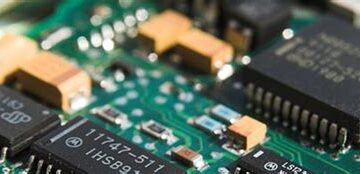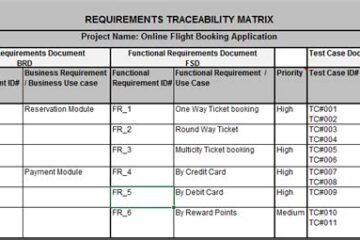How Does the Kelvin Test Work?
The Kelvin Test employs a four-wire measurement technique to eliminate the effects of lead and contact resistances, which can significantly impact the accuracy of low-resistance measurements. In a traditional two-wire resistance measurement, the test current flows through the same leads used to measure the voltage drop across the device under test (DUT). This arrangement results in the inclusion of lead and contact resistances in the measurement, leading to errors.
In contrast, the Kelvin Test uses four separate wires: two for supplying the test current (source leads) and two for measuring the voltage drop (sense leads). By separating the current-carrying and voltage-sensing paths, the Kelvin Test effectively eliminates the influence of lead and contact resistances, enabling highly accurate low-resistance measurements.
The Four Wires in Kelvin Test
-
Source Leads: The source leads, also known as the current leads or force leads, are connected to a constant current source. These leads supply the test current to the DUT.
-
Sense Leads: The sense leads, also known as the voltage leads or potential leads, are connected to a high-impedance voltmeter. These leads measure the voltage drop across the DUT.
The sense leads are connected as close as possible to the DUT to minimize the inclusion of any additional resistance in the measurement.
Kelvin Test Circuit Configuration
The Kelvin Test circuit configuration can be represented as follows:
+--------------+
| |
| Constant |
| Current |
| Source |
| |
+------+---+---+
| |
+------+ +---+
| |
| DUT |
| |
+---+------+---+
| |
| |
+---+ +---+
| |
| Voltmeter |
| |
+--------------+
In this configuration, the constant current source supplies the test current through the source leads, while the voltmeter measures the voltage drop across the DUT using the sense leads.
Advantages of Kelvin Test
The Kelvin Test offers several advantages over traditional two-wire resistance measurement methods:
-
High Accuracy: By eliminating the effects of lead and contact resistances, the Kelvin Test provides highly accurate low-resistance measurements. This accuracy is particularly important when dealing with resistances in the micro-ohm to ohm range, where lead and contact resistances can be comparable to or even larger than the DUT’s resistance.
-
Improved Repeatability: The four-wire measurement technique used in the Kelvin Test ensures consistent and repeatable results, as it minimizes the influence of variations in lead and contact resistances.
-
Reduced Measurement Errors: The Kelvin Test effectively eliminates errors caused by lead and contact resistances, which are common in two-wire resistance measurements. This reduction in measurement errors is crucial for applications that demand precise and reliable resistance values.
-
Wide Range of Applications: The Kelvin Test is suitable for a wide range of applications, including:
- Measuring the resistance of electrical contacts, switches, and connectors
- Testing the resistance of printed circuit board (PCB) traces and vias
- Evaluating the quality of solder joints and welds
- Characterizing the resistance of conductors, such as wires and cables
- Measuring the resistance of low-value resistors and shunts
Limitations and Considerations
While the Kelvin Test offers significant advantages, there are some limitations and considerations to keep in mind:
-
Increased Complexity: Compared to two-wire resistance measurements, the Kelvin Test requires additional wiring and equipment, such as a constant current source and a high-impedance voltmeter. This increased complexity can lead to higher setup and measurement times.
-
Proper Connection Techniques: To achieve accurate results, it is essential to ensure proper connection techniques when using the Kelvin Test. The sense leads must be connected as close as possible to the DUT to minimize the inclusion of any additional resistance. Improper connections can lead to measurement errors.
-
Thermal EMF Effects: In some cases, thermal electromotive force (EMF) effects can influence the accuracy of the Kelvin Test. Thermal EMFs are small voltages generated due to temperature differences between the junctions of dissimilar metals. To minimize thermal EMF effects, it is recommended to use materials with similar thermoelectric properties for the sense leads and to maintain a stable temperature environment during measurements.
-
Frequency Limitations: The Kelvin Test is primarily designed for DC resistance measurements. When measuring AC resistances or impedances, additional considerations, such as skin effect and capacitive coupling, may come into play. In such cases, specialized AC impedance measurement techniques may be required.

Kelvin Test Instrumentation
To perform a Kelvin Test, the following instrumentation is typically required:
-
Constant Current Source: A stable and accurate constant current source is needed to supply the test current to the DUT. The current source should have sufficient compliance voltage to maintain the desired current across the DUT’s resistance.
-
High-Impedance Voltmeter: A high-impedance voltmeter, such as a digital multimeter (DMM) or a nanovoltmeter, is used to measure the voltage drop across the DUT. The high input impedance of the voltmeter ensures that it does not draw significant current, minimizing any additional voltage drop in the sense leads.
-
Kelvin Probes or Kelvin Clips: Kelvin probes or Kelvin clips are specialized test leads designed for four-wire resistance measurements. These probes or clips have separate contacts for the source and sense leads, allowing for accurate connection to the DUT.
-
Test Fixtures: In some cases, test fixtures may be used to facilitate the connection of the DUT to the Kelvin Test instrumentation. Test fixtures ensure consistent and repeatable connections, minimizing errors due to variations in contact resistance.
Kelvin Test Measurement Procedure
The general procedure for performing a Kelvin Test measurement is as follows:
-
Connect the Instrumentation: Connect the constant current source to the source leads and the high-impedance voltmeter to the sense leads. Ensure that the sense leads are connected as close as possible to the DUT.
-
Set the Test Current: Set the desired test current on the constant current source. The test current should be chosen based on the resistance range of the DUT and the maximum allowable power dissipation.
-
Measure the Voltage Drop: Apply the test current to the DUT and measure the voltage drop using the high-impedance voltmeter. Ensure that the voltmeter is set to the appropriate range for accurate measurements.
-
Calculate the Resistance: Calculate the resistance of the DUT using Ohm’s Law:
R = V / I
Where:
– R is the resistance of the DUT in ohms (Ω)
– V is the measured voltage drop in volts (V)
– I is the test current in amperes (A)
- Record and Analyze the Results: Record the measured resistance value and analyze the results. Compare the measured value to the expected or specified resistance range for the DUT.
Example Kelvin Test Measurement
Let’s consider an example of measuring the resistance of a low-value resistor using the Kelvin Test:
- DUT: 100 mΩ resistor
- Test Current: 1 A
- Measured Voltage Drop: 100 mV
Using Ohm’s Law, we can calculate the resistance:
R = V / I
R = 100 mV / 1 A
R = 0.1 Ω = 100 mΩ
In this example, the Kelvin Test accurately measures the resistance of the 100 mΩ resistor, eliminating the effects of lead and contact resistances.
Frequently Asked Questions (FAQ)
-
Q: What is the main advantage of the Kelvin Test over traditional two-wire resistance measurements?
A: The main advantage of the Kelvin Test is its ability to eliminate the effects of lead and contact resistances, providing highly accurate low-resistance measurements. -
Q: Can the Kelvin Test be used for measuring high resistances?
A: While the Kelvin Test is primarily designed for measuring low resistances (micro-ohms to ohms), it can also be used for measuring higher resistances. However, for high-resistance measurements, the traditional two-wire method is often sufficient and more convenient. -
Q: What are the typical applications of the Kelvin Test?
A: The Kelvin Test is widely used in applications such as measuring the resistance of electrical contacts, switches, connectors, PCB traces, solder joints, welds, conductors, and low-value resistors. -
Q: How does the Kelvin Test eliminate the effects of lead and contact resistances?
A: The Kelvin Test uses a four-wire measurement technique, separating the current-carrying (source) leads from the voltage-sensing (sense) leads. By measuring the voltage drop directly across the DUT using the sense leads, the effects of lead and contact resistances are eliminated. -
Q: What is the importance of proper connection techniques in the Kelvin Test?
A: Proper connection techniques are crucial in the Kelvin Test to ensure accurate measurements. The sense leads must be connected as close as possible to the DUT to minimize the inclusion of any additional resistance. Improper connections can lead to measurement errors.
Conclusion
The Kelvin Test is a powerful and widely used method for accurately measuring low resistances, offering significant advantages over traditional two-wire resistance measurements. By employing a four-wire measurement technique, the Kelvin Test effectively eliminates the effects of lead and contact resistances, ensuring highly accurate and repeatable results.
Understanding the principles, advantages, limitations, and measurement procedures of the Kelvin Test is essential for professionals working in fields such as electrical engineering, quality control, and research laboratories. By leveraging the capabilities of the Kelvin Test, engineers and technicians can obtain precise resistance measurements, enabling them to make informed decisions and ensure the reliability and performance of electrical components and systems.
As technology continues to advance and the demand for accurate low-resistance measurements grows, the Kelvin Test remains an indispensable tool in the arsenal of electrical measurement techniques. By mastering the Kelvin Test, professionals can contribute to the development of high-quality electrical products, optimize manufacturing processes, and push the boundaries of scientific research.



0 Comments